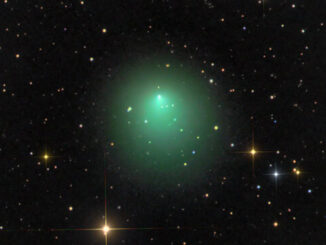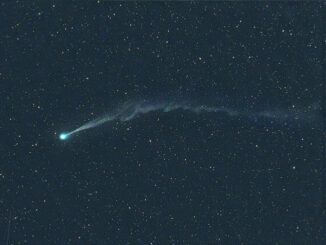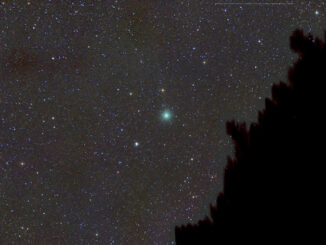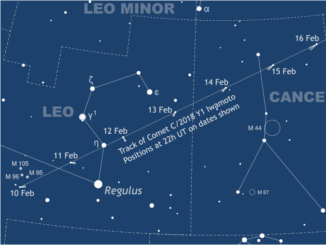
Comet









Get ready for Comet ATLAS (C/2019 Y4) in the northern spring sky!
Comet C/2019 Y4 was discovered by the Asteroid Terrestrial-impact Last Alert System (ATLAS) on 28 December last year and brightened 6000-fold in just two months to attain magnitude +7.5 on 1 April. Alas, the comet’s nucleus has now fragmented, dashing hopes for a conspicuous naked-eye spectacle in the constellation of Perseus. Here’s our telescopic observing guide.

See Comet Iwamoto’s dash through Leo, Cancer and Gemini before full Moon
Grab your binoculars to catch a glimpse of speedy Comet C/2018 Y1 Iwamoto over the coming week before the glare from a full Moon on 19 February drowns it out. Potentially attaining magnitude +6, the comet passes closest to Earth on 12 February when it can be found traversing Leo at a rate of 7.2 degrees/day. Don’t miss C/2018 Y1’s close enounter with galaxy NGC 2903 on 13 February – by eye, camera, or live online.
